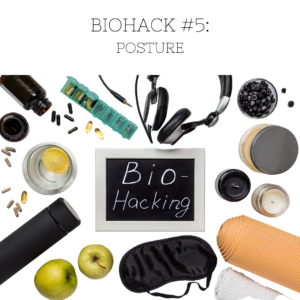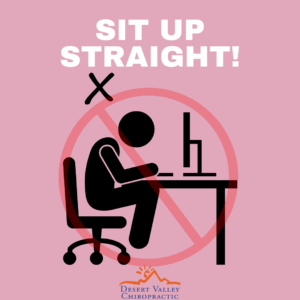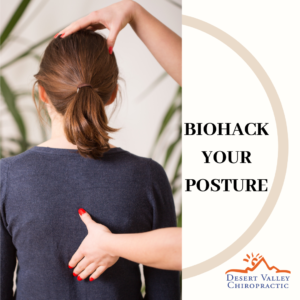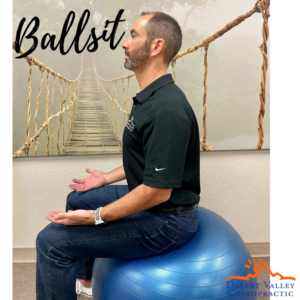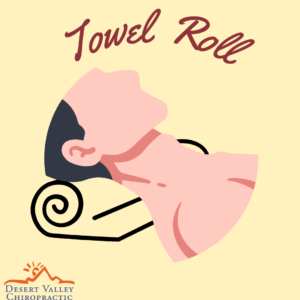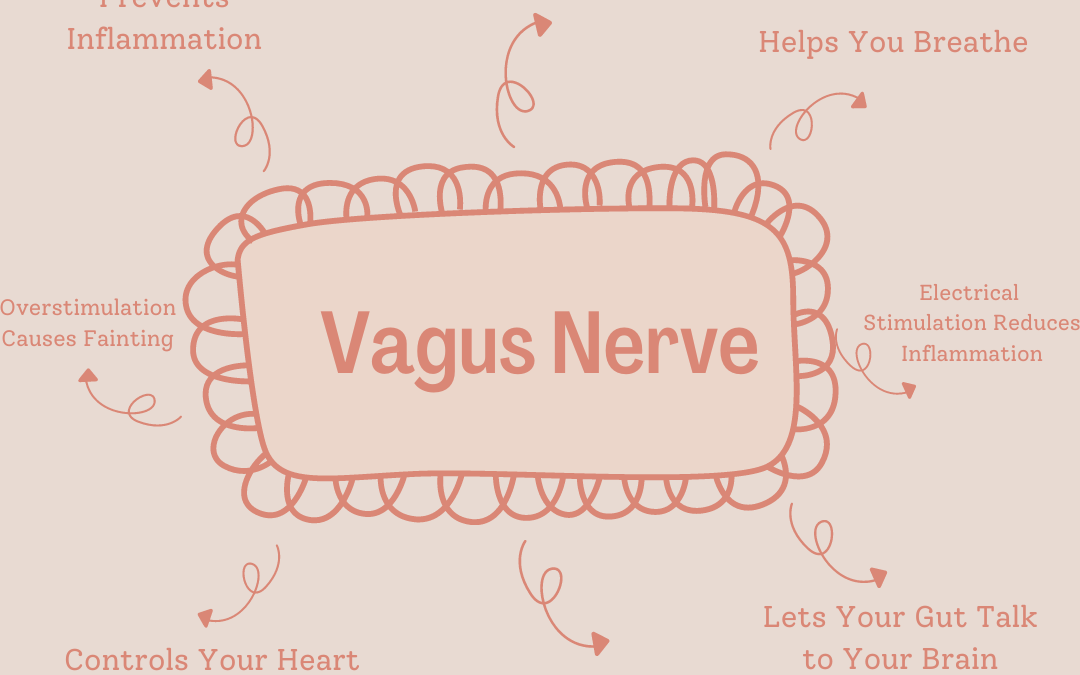
The Vagus Nerve A Biohack Jackpot!
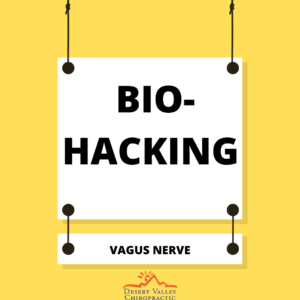
It’s true the Vagus nerve is a biohack jackpot! This month’s biohack is the Vagus nerve. The vagus nerve gets its name because it “wanders” like a vagabond around your whole body, sending out sensory fibers from your brainstem to your visceral organs. Chiropractors and chiropractic care has long understood the incredible benefits of this remarkable nerve that effects EVERYTHING! This month I want to give our patients at Desert Valley Chiropractic a basic understanding of how this nerve works as your human reset button, how your chiropractic adjustments help to stimulate this amazing process and how you can use as few simple exercises to stimulate your vagus nerve and tap into this amazing internal system.
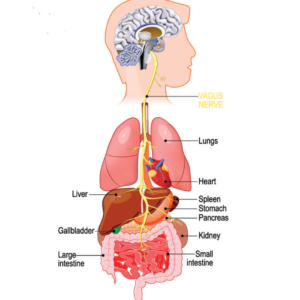
Fight or Flight, what is it and how does it effect our body? When we experience sudden, high stress, we activate our fight or flight response, getting the body ready to either flee the scene or fight. In most of our everyday experience, there is no place to run or hide, and the stressful situation is not one that can easily be fought off. Most of us are not meeting lions and tigers in the street! Most modern stressors are “man made” for example traffic, deadlines, and verbal confrontations, yet still produce that same primitive fight or flight response.
During periods of chronic high stress, the body stays in high gear, with stress hormones like adrenaline and cortisol surging through the body. This creates wear and tear on the body and mind, and over time can create a multitude of health problems such as chronic pain, gut inflammation, anxiety, mood swings, and more.
The good news is that our bodies contain their own reset button that can assist with decreasing our fight or flight response.
Your vagus nerve is one of the cranial nerves that connects the brain to the body. The vagus nerve is a major part of how our bodies and brain’s function; without it, our bodies wouldn’t be able to do basic tasks, and by stimulating it we can receive powerful health benefits. The vagus nerve, is the longest of the cranial nerves, and controls your inner rest and relax nerve center, the parasympathetic nervous system. The vagus nerve acts to counterbalance the fight or flight system and can trigger a relaxation response in our body.
Perhaps the greatest significance of the vagus nerve is that it is the body’s major parasympathetic nerve, supplying parasympathetic fibers to all the major organs of the head, neck, chest, and abdomen. The parasympathetic system is the rest and repose system it works opposite to the fight or flight system and allows our bodies to heal, repair and digest.
While there are actually two vagus nerves (the left and the right), doctors usually refer to them together as “the vagus nerve.” It originates in the brain stem and extends down through the neck and into the chest and abdomen. The vagus nerve helps to regulate many critical aspects of human physiology, including the heart rate, blood pressure, sweating, digestion, the gag reflex and even speaking. It carries both motor and sensory information, and it supplies innervation to the heart, major blood vessels, airways, lungs, esophagus, stomach, and intestines. The vagus nerve helps control several muscles of the throat and voice box. It plays a major role in regulating the heart rate and keeping the gastrointestinal tract in working order it also helps regulate vascular tone and control blood pressure. The vagus nerves also carry sensory information from the internal organs back to the brain.
Recent research has revealed that it may also be the missing link to treating chronic inflammation, and the beginning of an exciting new field of treatment for serious, incurable diseases. Here are eight facts about this powerful nerve bundle.
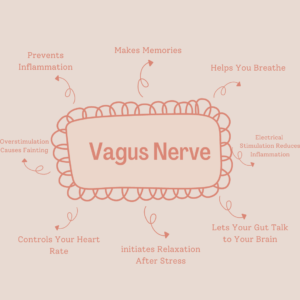
1. The vagus nerve prevents inflammation.
A certain amount of inflammation after injury or illness is normal but an overabundance is linked to many diseases and conditions, from sepsis to autoimmune conditions. The vagus nerve operates a vast network of fibers stationed like spies around all your organs. When it gets a signal for developing inflammation—the presence of cytokines or a substance called tumor necrosis factor (TNF)—it alerts the brain and draws out anti-inflammatory neurotransmitters that regulate the body’s immune response.
2. The vagus nerve helps you make memories.
A University of Virginia study in rats showed that stimulating their vagus nerves strengthened their memory. The action released the neurotransmitter norepinephrine into the amygdala, which consolidated memories. Related studies were done in humans, suggesting promising treatments for conditions like Alzheimer’s disease.
3. The vagus nerve helps you breathe.
The neurotransmitter acetylcholine, elicited by the vagus nerve, tells your lungs to breathe. It’s one of the reasons that Botox—often used cosmetically—can be potentially dangerous, because it interrupts your acetylcholine production. You can, however, also stimulate your vagus nerve by doing abdominal breathing or holding your breath for four to eight counts.
4. The vagus nerve controls your heart rate.
The vagus nerve is responsible for controlling the heart rate via electrical impulses to specialized muscle tissue—the heart’s natural pacemaker—in the right atrium, where acetylcholine release slows the pulse. By measuring the time between your individual heart beats, and then plotting this on a chart over time, doctors can determine your heart rate variability, or HRV. This data can offer clues about the resilience of your heart and vagus nerve.
5. The vagus nerve initiates relaxation after stress.
When your ever-vigilant sympathetic nervous system revs up the fight or flight responses—pouring the stress hormone cortisol and adrenaline into your body—the vagus nerve tells your body to relax by releasing acetylcholine. The vagus nerve’s tendrils extend to many organs, acting like fiber-optic cables that send instructions to release enzymes and proteins like prolactin, vasopressin, and oxytocin, which calm you down. People with a stronger vagus response may be more likely to recover more quickly after stress, injury, or illness.
6. The vagus nerve lets your gut “talk” to your brain.
Your gut uses the vagus nerve like a walkie talkie to tell your brain how you’re feeling via electric impulses called “action potentials.” Your gut feelings are very real.
7. Overstimulation of the vagus nerve is the most common cause of fainting.
If you tremble or get queasy at the sight of blood or while getting a flu shot, you’re not weak. You’re experiencing “vagal syncope.” Your body, responding to stress, overstimulates the vagus nerve, causing your blood pressure and heart rate to drop. During extreme syncope, blood flow is restricted to your brain, and you lose consciousness.
8. Electrical stimulation of the vagus nerve reduces inflammation and might stop it altogether.
Neurosurgeon Kevin Tracey was the first to show that stimulating the vagus nerve can significantly reduce inflammation. Results on rats were so successful, he reproduced the experiment in humans with stunning results. The creation of implants to stimulate the vagus nerve via electronic implants showed a drastic reduction, and even remission, in rheumatoid arthritis (which has no known cure and is often treated with toxic drugs), hemorrhagic shock, and other equally serious inflammatory syndromes.
How to stimulate the vagus nerve
Cold showers
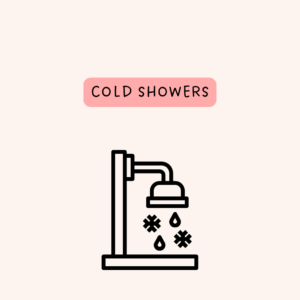
As our body adjusts to cold temperatures the vagus nerve is activated to reduce our sympathetic stress response and increase our parasympathetic rest and relaxation state. In addition to strengthening the vagus nerve it has the additional benefits of increasing lymph flow, which removes toxins, bacteria, viruses and other waste products from the body. Cold causes the heart to pump more efficiently to increase blood flow and deliver more oxygen and nutrients to the body. Cold also speeds up our metabolism, which boosts the immune system.
Humming and singing
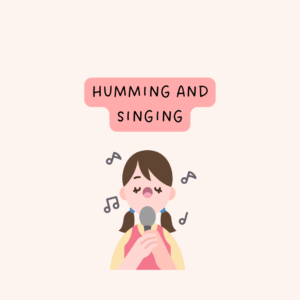
Humming, singing or chanting activates the vocal cords, which the vagus nerve passes through. The vibration of the vocal cords stimulates the nerve helping to strengthen its connection to our parasympathetic system.
Gargling
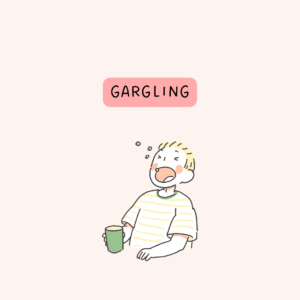
Gargling activates the muscles at the back of the throat, which the vagus nerve runs through. Stimulating and working the muscles makes the nerve fire just like when we exercise our bodies these exercises strengthen our vagal tone and improve our health.
Gag reflex
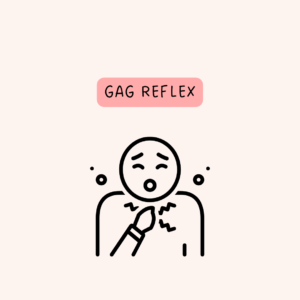
When you gag, you’re activating the throat muscles that are connected to the vagus nerve. In fact, doctors use the gag reflex as a way to tell if your vagus nerve is working optimally. If the reflex is missing or weak on either side, it could signal vagus nerve dysfunction.
Deep breathing and meditation
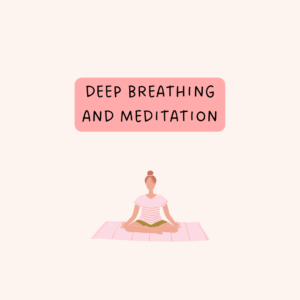
As we breath we stimulate the sympathetic nervous system when we inhale, while exhaling we stimulate the parasympathetic system and our relaxation response. Breathing exercises are one of the best vagus nerve exercises for digestion. Performing deep breathing exercises for 1 minute before eating activates the parasympathetic nervous system producing an increase in digestive enzymes which optimizes our digestion and the amount of nutrients, we get from the food we consume.
Exercise
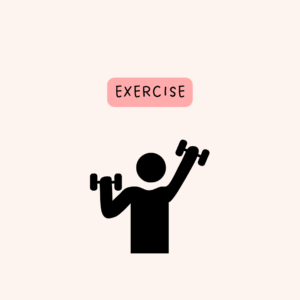
Working out and getting your body moving can affect your vagus nerve, research shows. Interval training and endurance training can increase your vagus nerve activity and improve your heart rate variability. Exercise, especially activities that get your heart rate up, offer a great way to tone your vagus nerve brisk walking, weightlifting , swimming, or cardio training are great. Cardio training is one of the best methods for vagus nerve stimulation because it requires you to work to control your breathing. However, take care not to over train. A small 2022 study found that particularly grueling workouts, like too much high-intensity interval training (HIIT), can put a lot of stress on your vagus nerve. Make it a point to incorporate breathwork and cooldowns into your workouts.
Chiropractic adjustments

Our favorite!! New research from 2018 shows that a chiropractic adjustment improves heart rate variability by boosting the health function of the vagus nerve. An improvement in the vagus nerve activity plays a major role in regulating autonomic nervous system function, lowering chronic disease risk, and decreasing mortality rates. If there is dysfunction in the joints of the spine that creates tension and inflammation at the brainstem or at various levels of the spinal cord, our nervous system, including the vagus nerve, can be impaired. Getting chiropractic adjustments will relieve the tension and reduce the inflammation around the joint and nerve setting the body up to function optimally. Those who seek chiropractic care are better equipped to deal with the common stresses that put our nervous system on edge or on overdrive.
A great morning routine to put some of these exercises into your day is do a 20- 30-minute workout focusing on your breathing and ending with 1-2 minutes of breathing exercises during your cool down. Hum or sing while you are in the shower and finish your shower off with a cold-water rinse. While brushing your teeth lightly stimulate your gag reflex on each side after gargle with a mouth rinse. Then come and see us for an adjustment!


